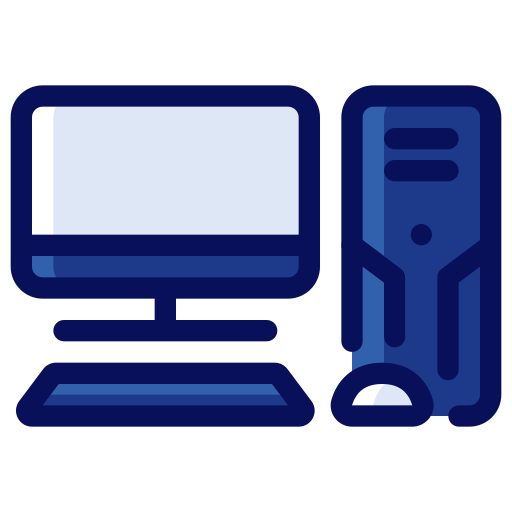

The way I read it, he was making it hard to remove the empty sidebar after blocking the ads in it.


The way I read it, he was making it hard to remove the empty sidebar after blocking the ads in it.


I’m confused what your issue is with the dev. He seems to have posted because uBO was breaking the site for premium users and then got told “just stop monetizing effectively.” Only one reply (don’t use such an obnoxious way to insert the ad sidebar) was actually helpful, though it was at odds with part of his monetization strategy (pay for Premium to get that extra space).
If uBO devs had said “Sure, give this account premium access and we’ll check it out” and he’d refused, that would be different, but instead they said there was nothing he could do to help them and banned him from participating.
It also doesn’t seem that he’s intentionally breaking the app when uBO is in use. Rather, uBO breaks the app when ads aren’t being served and he is now detecting when this happens and serving a message about the fact.
Does anyone know of similar image editors out there that can batch-crop images in a certain aspect ratio/resolution and then export them to webp?
Not similar, but Image Magick can crop images from the cli and has webp support.
Some more discussion on the topic: https://lemmy.blahaj.zone/post/32570282


I didn’t say it wasn’t convenient. I said it was counter intuitive.


That’s pretty much the standard.
Assuming OP has standard gestures enabled, they could still swipe from the left side.


The system is still “PC” in this case, even if technically the platform is different. And since you have to log into your account with their service, they can easily confirm that you own the game.
I don’t have to create an account to play Slay the Spire on Android.


IMO, yes. I think it would make people more, rather than less, inclined to comment on a cross-post made in a smaller communities, since then their comment would be more visible.
The main concern I can see being raised is potentially leading to brigading? I’m not sure if that’s much of an issue on Lemmy and I would assume being able to de-federate would mitigate that substantially.


Can’t you turn on Developer Mode to enable third party slicers?


I believe you set env vars on Windows through System Properties -> Advanced -> Environment Variables.


I believe you just need to set the env var OLLAMA_HOST to 0.0.0.0:11434 and then restart Ollama.


What OS is your server running? Do you have an Android phone or an iPhone?
In either case all you likely need to do is expose the port and then access your server by IP on that port with an appropriate client.
In Ollama you can expose the port to your local network by changing the bind address from 127.0.0.1 to 0.0.0.0
Regarding clients: on iOS you can use Enchanted or Apollo to connect to Ollama.
On Android there are likely comparable apps.


I think of the Bambu P1S as the inexpensive alternative to the Bambu X1C or a comparable printer from Prusa, at least in terms of print consistency and ease of use.
My Bambu was my fourth 3D printer (second FDM printer) and it took 3D printing from a frustrating, time consuming hobby to just a thing I do to enable other hobbies. I don’t have to spend time tweaking settings to get a decent print, because the default settings are already good enough. Instead, I can focus on designing models or working with finished prints.


I’ll have to check out both OpenSCAD and Code Comic. Some completely non-CAD DSLs that you might be interested in, since you mentioned GraphViz:
Mermaid.js does something very similar to Graphviz. There are a couple other similar tools like that out there, but Mermaid is supported in a lot of places natively or as an easy to use plugin, like GitHub Markdown (and other git forges like Forgejo), Hedgedoc, Obsidian, SilverBullet, etc…
I’d also argue that LaTeX counts, and to a lesser extent, Markdown - compare using them to using Word.
And reveal.js is an equivalent for slide deck creation that would normally be done with PowerPoint.
He’s definitely innocent. Sorry, thought I had an “allegedly” in there. Gonna edit my comment to add one now, thanks for calling that out
Why would we like him less? Being privileged and throwing that away means he had more to lose and allegedly did it anyway.


From https://wiki.servarr.com/
Welcome to the consolidated wiki for Lidarr, Prowlarr, Radarr, Readarr, Sonarr, and Whisparr. Collectively they are referred to as “*Arr”, “*Arrs”, “Starr”, or “Starrs”. They are designed to automatically grab, sort, organize, and monitor your Music, Movie, E-Book, or TV Show collections for Lidarr, Radarr, Readarr, Sonarr, and Whisparr; and to manage your indexers and keep them in sync with the aforementioned apps for Prowlarr.
See also https://wiki.ravianand.me/home-server/apps/servarr
Servarr is the name for the ecosystem of apps that help you run and automate your own home media server. This includes fetching movie and TV show releases, books and music management, indexer and UseNet/Torrent managers and downloaders.


The original Switch was constantly sold out. I assume there were supply issues. It’s likely that it would have outsold the Switch 2 if they’d had the same supply.


I’m a professional software engineer and I’ve been in the industry since before Kubernetes was first released, and I still found it overwhelming when I had to use it professionally.
I also can’t think of an instance when someone self-hosting would need it. Why did you end up looking into it?
I use Docker Compose for dozens of applications that range in complexity from “just run this service, expose it via my reverse proxy, and add my authentication middleware” to “in this stack, run this service with my custom configuration, a custom service I wrote myself or forked, and another service that I wrote a Dockerfile for; make this service accessible to this other service, but not to the reverse proxy; expose these endpoints to the auth middleware and for these endpoints, allow bypassing of the auth middleware if an API key is supplied.” And I could do much more complicated things with Docker if I needed to, so even for self-hosters with more complex use cases than mine, I question whether Kubernetes is the right fit.


You can store passkeys in (and use them from) a password manager instead of the OS’s secret vault. I think most major password managers support this now - Bitwarden definitely does.
https://github.com/Xyphyn/photon/blob/main/CLAUDE.md
File not found.